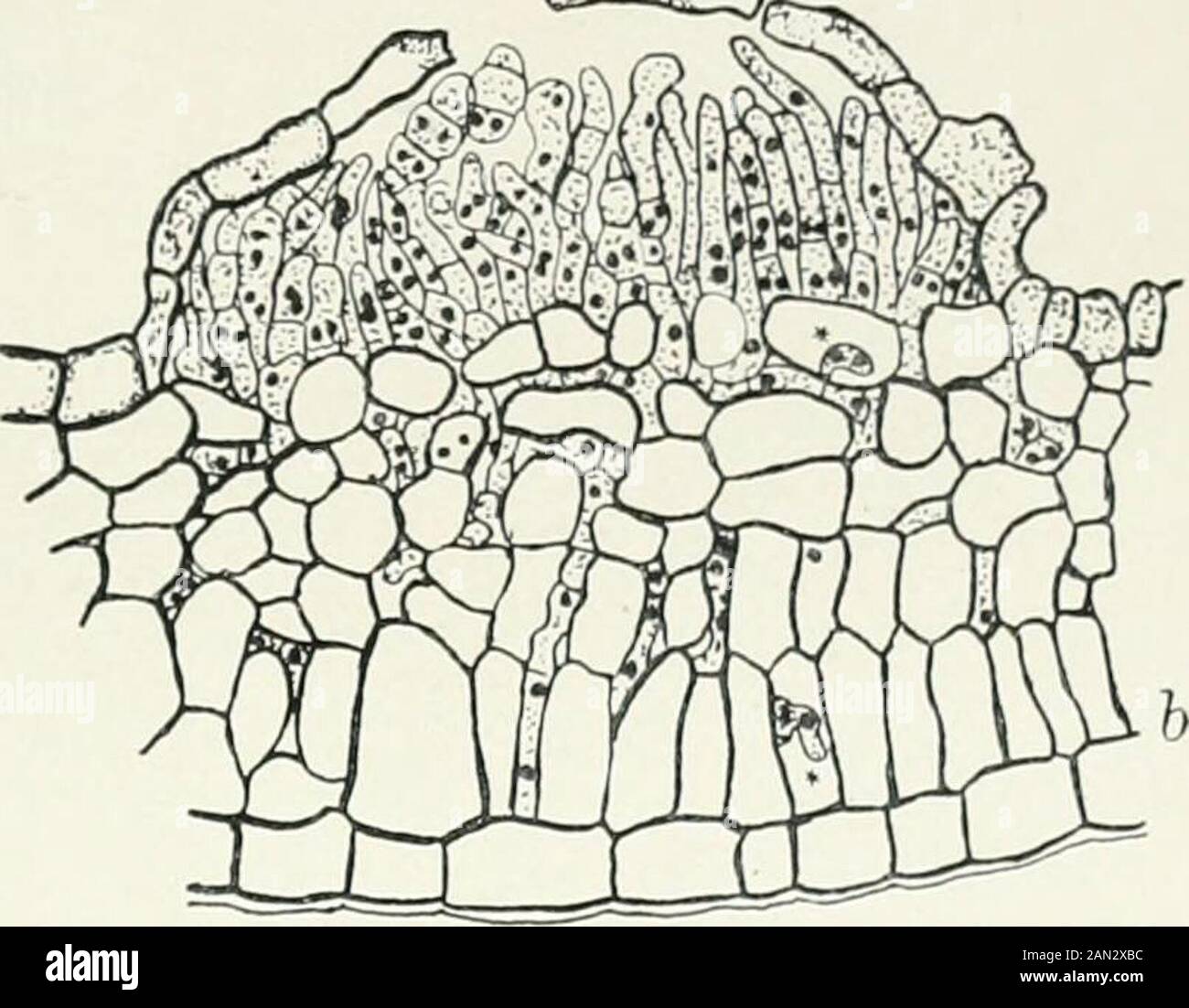Fungi, Ascomycetes, Ustilaginales, Uredinales . Fig. 180. a. Phragmidium Kuln Pers.; teleutosorus, x 240: after Sappin-Trouffy; b. Pkragmidiumviolaceum Wint.; teleutosorus, 240; after Blackmail. except in the genus Uredinopsis, on ferns, where they are scattered. Like theuredospores the teleutospores are with or without paraphyses and like themarise from rectangular basal cells. They appear as narrow binucleateoutgrowths in which one or more divisions take place so that, in themajority of cases, a stalk is formed below and the simple or compoundteleutospore is produced above (fig. 181). The st

Image details
Contributor:
The Reading Room / Alamy Stock PhotoImage ID:
2AN2XBCFile size:
7.1 MB (288.9 KB Compressed download)Releases:
Model - no | Property - noDo I need a release?Dimensions:
1791 x 1395 px | 30.3 x 23.6 cm | 11.9 x 9.3 inches | 150dpiMore information:
This image is a public domain image, which means either that copyright has expired in the image or the copyright holder has waived their copyright. Alamy charges you a fee for access to the high resolution copy of the image.
This image could have imperfections as it’s either historical or reportage.
Fungi, Ascomycetes, Ustilaginales, Uredinales . Fig. 180. a. Phragmidium Kuln Pers.; teleutosorus, x 240: after Sappin-Trouffy; b. Pkragmidiumviolaceum Wint.; teleutosorus, 240; after Blackmail. except in the genus Uredinopsis, on ferns, where they are scattered. Like theuredospores the teleutospores are with or without paraphyses and like themarise from rectangular basal cells. They appear as narrow binucleateoutgrowths in which one or more divisions take place so that, in themajority of cases, a stalk is formed below and the simple or compoundteleutospore is produced above (fig. 181). The stalk may increase consider-ably in length (Gymnosporangium, Uromyces, Puccinid) or may be veryshort or absent (Colcosporiuiu, Melampsord). As already stated tin; young teleutospore cell is binucleate (fig. [82);when the wall is fully thickened the two nuclei fuse and the spore passesinto the resting state. On the renewal of its development two nucleardivisions occur and the gametophytic phase is initiated with the productionof the uninucleate b